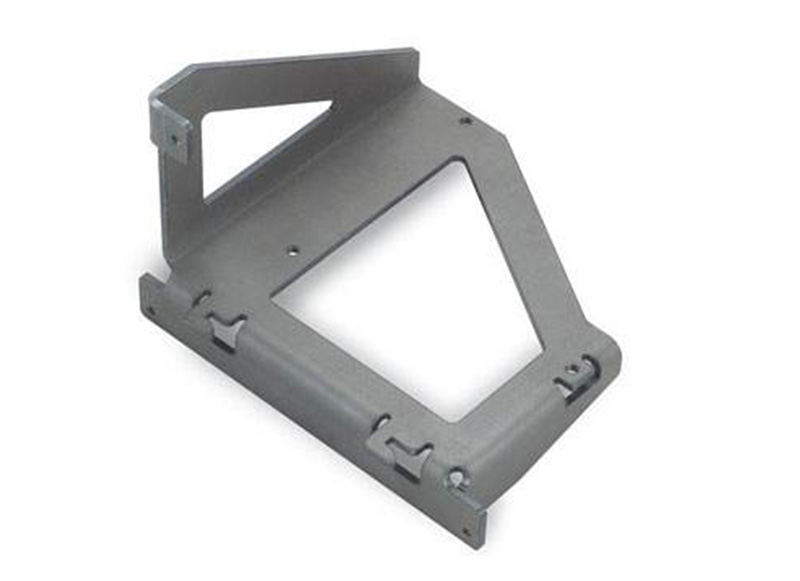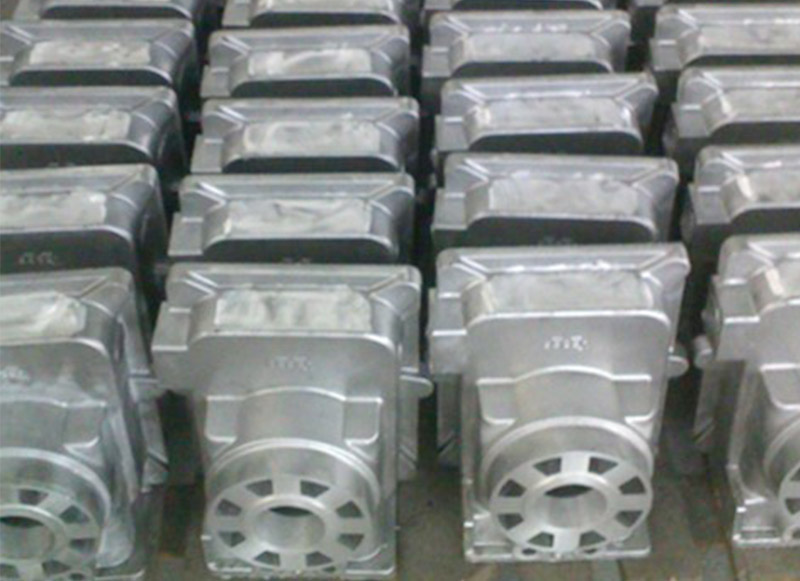The installation location of the CNC Milling Part production equipment
The installation location of CNC Milling Part production equipment will depend on the size and type of the equipment, as well as the space available in the facility. Generally, the equipment should be installed in a dedicated area that is free from obstructions and has adequate ventilation and lighting. The area should also be large enough to accommodate the equipment and any necessary safety equipment. Additionally, the area should be close to the production line and other necessary resources, such as power and water.
The use environment of CNC Milling Part production equipment
CNC milling part production equipment is typically used in industrial settings, such as factories and machine shops. It is used to produce parts for a variety of industries, including automotive, aerospace, medical, and electronics. The equipment is used to cut, shape, and finish metal and other materials to create parts with precise dimensions and tolerances. The equipment is also used to create complex shapes and intricate details. The use of CNC milling part production equipment requires a high level of skill and knowledge, as well as a thorough understanding of the materials being used and the desired end product.
What equipment is needed to produce CNC Milling Part
1. CNC Milling Machine: This is the main piece of equipment used to produce CNC Milling Parts. It is a computer-controlled machine that uses a cutting tool to remove material from a workpiece.
2. CAD/CAM Software: This software is used to create the design of the part and to generate the code that will be used to control the CNC Milling Machine.
3. Cutting Tools: These are the tools used to cut the material. They can be made of various materials such as high-speed steel, carbide, or diamond.
4. Workholding Devices: These are used to hold the workpiece in place while it is being machined. Examples include vises, clamps, and fixtures.
5. Measuring Tools: These are used to measure the part during and after machining. Examples include calipers, micrometers, and gauges.

How to operate the CNC Milling Part production equipment
1. Set up the CNC Milling Part production equipment:
a. Install the CNC Milling Part production equipment in a safe and secure area.
b. Connect the power supply and make sure the machine is properly grounded.
c. Install the necessary tools and accessories.
d. Set up the workpiece and the cutting tools.
2. Program the CNC Milling Part production equipment:
a. Enter the necessary parameters into the CNC controller.
b. Load the program into the CNC controller.
c. Check the program for accuracy.
3. Operate the CNC Milling Part production equipment:
a. Start the machine and check the operation.
b. Monitor the machine’s performance and adjust the parameters as needed.
c. Stop the machine when the job is complete.
d. Clean the machine and the work area.
e. Inspect the finished parts for accuracy and quality.
The replacement and update cycle of CNC Milling Part production equipment
The replacement and update cycle of CNC Milling Part production equipment depends on the type of equipment, the production requirements, and the budget. Generally, CNC Milling Part production equipment should be replaced or updated every 5-7 years. However, if the production requirements are high, the equipment should be replaced or updated more frequently. Additionally, if the budget allows, it is recommended to replace or update the equipment more often to ensure that the production process is efficient and cost-effective.
Safety measures for CNC Milling Part production equipment
1. Wear appropriate safety gear: When working with CNC milling part production equipment, it is important to wear the appropriate safety gear, such as safety glasses, hearing protection, and a dust mask.
2. Keep the work area clean: It is important to keep the work area clean and free of debris to reduce the risk of injury.
3. Follow safety protocols: It is important to follow all safety protocols when operating CNC milling part production equipment. This includes reading and understanding the operator’s manual, following all safety instructions, and using the appropriate safety guards.
4. Use the right tools: It is important to use the right tools for the job. This includes using the correct cutting tools, such as end mills, drill bits, and taps.
5. Inspect the equipment regularly: It is important to inspect the equipment regularly to ensure that it is in good working order. This includes checking for worn or damaged parts, as well as checking for any loose bolts or screws.
6. Use the right lubricants: It is important to use the right lubricants when operating CNC milling part production equipment. This includes using the correct type of oil or grease for the job.
7. Keep the machine clean: It is important to keep the machine clean to reduce the risk of injury. This includes cleaning the machine after each use and regularly checking for any debris or dust.
Regular maintenance and maintenance of CNC Milling Part production equipment
1. Regularly check the lubrication of the CNC Milling Part production equipment, and add lubricating oil to the parts that need to be lubricated in time.
2. Regularly check the fastening parts of the CNC Milling Part production equipment, and tighten the loose parts in time.
3. Regularly check the electrical components of the CNC Milling Part production equipment, and replace the damaged parts in time.
4. Regularly check the transmission parts of the CNC Milling Part production equipment, and replace the worn parts in time.
5. Regularly check the cooling system of the CNC Milling Part production equipment, and clean the cooling system in time.
6. Regularly check the CNC Milling Part production equipment for abnormal noise, and find out the cause in time.
7. Regularly check the CNC Milling Part production equipment for dust accumulation, and clean the dust in time.
8. Regularly check the CNC Milling Part production equipment for oil leakage, and find out the cause in time.
Reliability requirements for CNC Milling Part production equipment
1. The CNC Milling Part production equipment should be designed to operate reliably and consistently over long periods of time.
2. The CNC Milling Part production equipment should be designed to minimize downtime and maximize production efficiency.
3. The CNC Milling Part production equipment should be designed to be easily maintained and serviced.
4. The CNC Milling Part production equipment should be designed to be safe for operators and other personnel.
5. The CNC Milling Part production equipment should be designed to be able to handle a wide range of materials and sizes.
6. The CNC Milling Part production equipment should be designed to be able to produce parts with high accuracy and repeatability.
7. The CNC Milling Part production equipment should be designed to be able to produce parts with minimal waste.
8. The CNC Milling Part production equipment should be designed to be able to produce parts with minimal scrap.
9. The CNC Milling Part production equipment should be designed to be able to produce parts with minimal rework.
10. The CNC Milling Part production equipment should be designed to be able to produce parts with minimal defects.
Emission standards and environmental protection requirements for CNC Milling Part production equipment
CNC Milling Part production equipment must meet the following environmental protection requirements:
1. The equipment must meet the emission standards set by the local environmental protection department.
2. The equipment must be equipped with a dust collection system to reduce the emission of dust and other pollutants.
3. The equipment must be equipped with a noise reduction system to reduce the noise pollution.
4. The equipment must be equipped with a cooling system to reduce the heat generated during the production process.
5. The equipment must be equipped with an exhaust system to reduce the emission of harmful gases.
6. The equipment must be equipped with a water treatment system to reduce the emission of wastewater.
7. The equipment must be equipped with a waste disposal system to reduce the emission of hazardous waste.
Scrapping, dismantling and recycling process of CNC Milling Part production equipment
1. Disassembly: The first step in the scrapping, dismantling and recycling process of CNC Milling Part production equipment is to disassemble the equipment. This involves removing all components, such as motors, belts, pulleys, and other parts.
2. Sorting: Once the equipment has been disassembled, the components must be sorted into different categories. This includes sorting by material type, size, and other characteristics.
3. Cleaning: The components must then be cleaned to remove any dirt, dust, or other debris. This can be done using a variety of methods, such as pressure washing, steam cleaning, or chemical cleaning.
4. Separating: The components must then be separated into different categories, such as metals, plastics, and other materials. This is done to ensure that the materials can be recycled properly.
5. Recycling: The components must then be recycled according to their material type. Metals can be recycled through smelting, while plastics can be recycled through a process called pyrolysis.
6. Disposal: The remaining components must then be disposed of in an environmentally friendly manner. This can include donating them to a local charity or recycling center, or disposing of them in a landfill.
Relevant legal and regulatory requirements for CNC Milling Part production equipment
1. Occupational Safety and Health Administration (OSHA) Regulations: OSHA regulations are designed to protect workers from potential hazards associated with CNC milling part production equipment. These regulations include requirements for machine guarding, lockout/tagout procedures, and personal protective equipment.
2. Environmental Protection Agency (EPA) Regulations: The EPA regulates the emissions of hazardous air pollutants (HAPs) from CNC milling part production equipment. These regulations require manufacturers to install and maintain pollution control equipment to reduce emissions of HAPs.
3. National Fire Protection Association (NFPA) Standards: NFPA standards provide guidance on the safe operation and maintenance of CNC milling part production equipment. These standards include requirements for fire protection systems, electrical safety, and ventilation.
4. American National Standards Institute (ANSI) Standards: ANSI standards provide guidance on the design and operation of CNC milling part production equipment. These standards include requirements for machine safety, ergonomics, and noise control.
5. International Organization for Standardization (ISO) Standards: ISO standards provide guidance on the quality management of CNC milling part production equipment. These standards include requirements for quality assurance, traceability, and documentation.
Analysis of the use cost and operating cost of CNC Milling Part production equipment
The cost of using CNC milling part production equipment depends on the type of equipment, the complexity of the parts being produced, and the number of parts being produced. The cost of operating the equipment includes the cost of electricity, maintenance, and labor.
The cost of purchasing CNC milling part production equipment can vary greatly depending on the type of equipment and the complexity of the parts being produced. Generally, the more complex the parts, the more expensive the equipment. The cost of the equipment also depends on the number of parts being produced. The more parts being produced, the more expensive the equipment.
The cost of operating CNC milling part production equipment includes the cost of electricity, maintenance, and labor. The cost of electricity depends on the type of equipment and the amount of electricity used. The cost of maintenance depends on the type of equipment and the frequency of maintenance. The cost of labor depends on the number of workers needed to operate the equipment and the complexity of the parts being produced.
In conclusion, the cost of using and operating CNC milling part production equipment depends on the type of equipment, the complexity of the parts being produced, and the number of parts being produced. The cost of purchasing the equipment can vary greatly depending on the type of equipment and the complexity of the parts being produced. The cost of operating the equipment includes the cost of electricity, maintenance, and labor.
